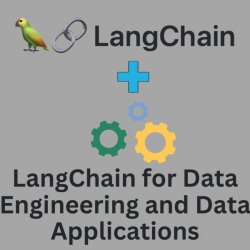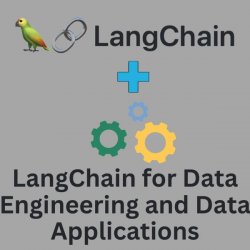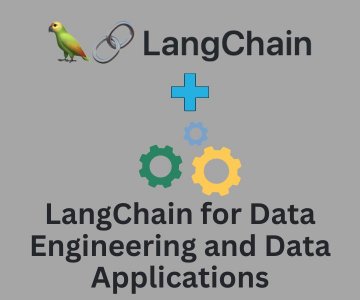AI vs ML in Data Science 2023


Introduction to AI vs ML in Data Science 2023
As the world of Data Science continues to evolve, the distinction between AI (artificial intelligence) and ML (machine learning) will become increasingly important in 2023. Although related, these two technologies serve different purposes within the data science field, so it is essential to understand their distinct features and how they can work together.
In a simplest term, Artificial Intelligence (AI) is a type of technology that performs complicated tasks by mimicking the behaviour and decisions of humans. Machine Learning (ML), on the other hand, is a type of artificial intelligence that enables computers to learn from data without human intervention. It uses algorithms and statistical models to identify patterns in data, recognizing correlations and making decisions or predictions based on that knowledge.
To best understand AI vs ML in Data Science 2023, you should be aware that automation and predictive analysis are two of the key aspects of any successful organization in this era. Through automation, organisations can optimize processes like sales forecasting, workflow management, customer segmentation etc., while predictive analysis will help them identify trends in their customer base so they can anticipate future demands more accurately. Both these applications rely heavily on learning algorithms such as supervised learning or unsupervised learning. Supervised learning requires a user to provide examples for the computer to learn from while unsupervised learning requires no external input as it looks for patterns using its own instincts and processes.
One example of AI used in Data Science today is Artificial Neural Networks (ANN). This type of artificial intelligence simulates the activity of neurons within networks by performing sophisticated calculations on growing amounts of data sets to find patterns and correlations between them – making better informed decisions on behalf of the company or organisation. Data Analyst Course in Bangalore
What is Artificial Intelligence (AI)?
What is Artificial Intelligence (AI)? AI is a term used to describe the ability of a computer or machine to simulate or replicate human intelligence. AI has been around for decades, and its application in the field of data science has grown exponentially in recent years. In data science, AI can be used to automate processes and make decisions based on large amounts of data that would otherwise be too time consuming and difficult for humans.
Machine learning (ML) is closely related to AI and provides an additional layer of capabilities for understanding data. ML uses algorithms to store and analyse data sets more effectively than traditional databases. By applying ML techniques like supervised learning, unsupervised learning and deep learning, machines can learn from their own experiences and become smarter over time. In the field of data science, ML can help provide insights into complex problems by identifying patterns in the data that wouldn’t be visible to humans.
As we move into 2023, the use of AI and ML in data science will become even more advanced. With greater computing power at our disposal, it will be possible to apply more sophisticated algorithms to larger datasets. This will lead to a wider range of applications for AI and ML, such as automating business processes or improving accuracy in medical diagnoses. As we continue on this path, we should expect to see even greater advances in automation and decision making powered by AI and ML technologies. Masters in Data Science India
Types of AI – Narrow, General and Super AI
When discussing Artificial Intelligence and its application in Data Science, it is important to understand the different types of AI: Narrow, General and Super AI. Narrow AI is a limited form of artificial intelligence that has been programmed to solve specific tasks. These tasks can range from Apple’s virtual assistant Siri to autonomous vehicles as seen in emerging self-driving cars. On the other hand, General AI is more flexible in its ability to handle various tasks with greater complexity than narrow AI applications. Finally, Super AI is an advanced form of artificial intelligence that has the potential to surpass human intelligence.
Data Science 2023 will see an increased usage of both Narrow and General AI in various applications. For example, data scientists could use machine learning algorithms to detect patterns within data that would otherwise be laborious for humans to interpret. This could make data analysis faster and more accurate for organizations. Additionally, deep learning algorithms are being used by companies such as Google for speech recognition, allowing customers to quickly interact with their products using natural language processing (NLP). It is likely that both Narrow and General AI will become even more prevalent in Data Science 2023 as technology continues to evolve.
The goal of developing Super AI poses greater challenges than those associated with the development of Narrow or General AI. This type of technology must be able to learn and develop predictive abilities on a much larger scale than any existing algorithm or model available today. Scientists are working on various approaches such as reinforcement learning (RL) and deep neural networks (DNNs) in order to create intelligent machines capable of human-level performance on complex tasks at scale.
How Does AI Work?
Are you considering a career in data science but feel overwhelmed by artificial intelligence (AI) and machine learning (ML)? You’re not alone! AI and ML have become increasingly popular technologies in the last few years, and understanding the differences between them can often be confusing. This blog section will help you gain a better understanding of how AI works and how it differs from ML, so that you can make more informed decisions about your future career path.
So, what is AI? In its simplest terms, AI is the technology of automating tasks that would traditionally require human intelligence. It typically involves algorithms to interpret data, solve problems, and make decisions. For example, AI could be used to create computer programs that can recognize patterns in an image or language process natural language.
When it comes to data science, there are two main types of AI: supervised learning and unsupervised learning. Supervised learning requires labelled data sets that are already categorized into different classes while unsupervised learning uses unlabelled data sets. In either case, the goal is for the computer to learn from the data to complete tasks autonomously.
Machine learning on the other hand is a subset of AI that focuses on making computers learn by themselves. Rather than relying on preprogramed rules like traditional AI systems do, ML algorithms use statistical models to identify patterns in data without being explicitly programmed to do so. With ML, computers can learn from experience by adjusting parameters over time until they reach a desired outcome or accuracy level.
Another type of ML algorithm is neural networks which take inspiration from biological brains with multiple layers of connected nodes (“neurons”).
Benefits of Implementing AI in Data Science 2023
One of the key benefits of implementing AI in data science is cost reduction. With AI driven automation, both time and money can be saved by reducing the need for manual labour to input data or generate insights from analysis. In addition, AI has been proven to reduce decision making time and improve accuracy by eliminating human error throughout the entire process.
AI also provides businesses with an ability to create a personalized experience for their customers. Utilizing advanced algorithms, companies can personalize their products and services based on customer interests and behaviour – truly enhancing user experience at every level.
In addition, AI streamlines various organizational processes such as market intelligence or customer segmentation – resulting in efficient use of resources while producing accurate insights faster than ever before. Automated insights created by advanced machine learning allow organizations to simplify their operations while still obtaining valuable information quickly.
Overall, it’s clear that integrating AI into data science operations offers immense benefits to businesses of all types. By developing predictive analytics models and leveraging ML algorithms, companies can reduce costs while improving accuracy and creating a personalized user experience that keeps customers coming back time after time. The streamlined processes enabled through automated insights also allows businesses to save resources while obtaining data driven intelligence faster than ever before — making AI one of the most powerful forces in Data Science in 2023.
What is Machine Learning (ML)?
It is a form of artificial intelligence (AI) that uses algorithms to find patterns and trends in data, allowing machines to make accurate decisions. ML has become an important part of the data science landscape in recent years and is becoming increasingly more prominent. This article will explain the basics of ML, why it is important and how it differs from AI.
First, let’s define what Machine Learning is. In short, Machine Learning is an algorithm-based learning method where computer programs are used to determine patterns in large amounts of data. The goal of ML is to uncover hidden insights and generate meaningful predictions. Put simply, ML is a way for computers to learn by making predictions without being explicitly programmed to do so.
ML falls under a subset of AI called “Machine Intelligence” or “Computational Intelligence” which means that it focuses on developing algorithms that can simulate human behaviour and decision-making processes in order to aid decision makers as well as improve overall accuracy in results. This type of “smart” technology allows machines to make predictions and automated decisions without requiring any human input or intervention.
One key difference between AI and ML is that AI focuses more on computer vision (i.e., recognizing images) whereas ML focuses more on predictive analytics (i.e., predicting results). While the two technologies are deeply intertwined when it comes to the data science scene, they have different strengths and weaknesses when it comes to tackling problems in different areas. Data Analyst Course in Delhi
Types of ML – Supervised, Unsupervised and Deep Learning
The three main types are supervised, unsupervised, and deep learning. Each type has its own unique benefits and applications in data science.
Supervised learning is a type of ML that allows computers to learn from labelled data. This means that humans provide clues to machines to help them make decisions and predictions. For example, if we have a dataset with images of cats and dogs, we can label those images with the animal’s name (cat or dog) so the computer knows which image belongs to which category. Supervised learning can be used for classification tasks such as facial recognition or gaming bots.
Unsupervised learning does not require labelled data as humans do not provide guidance/labels on how to use the data. Rather, it lets computers work on their own by grouping input datasets into clusters based on similarities. This type of ML is most commonly used for customer segmentation, clustering analysis, market segmentation etc. It allows businesses to understand trends without putting in the extra effort needed for supervised methods.
Finally, Deep Learning is an advanced form of ML that uses neural networks (algorithms inspired by our brain’s neural pathways). Unlike supervised and unsupervised learning which use linear algorithms (e.g., decision trees), deep learning incorporates hidden layers between input and output layers that allow computers to learn more complex patterns from data at significantly faster speeds than traditional ML algorithms. It has been behind advancements in computer vision such as self-driving cars and facial recognition technology used in security systems today.
How Does ML Work?
Machine Learning (ML) is a rapidly growing field of Artificial Intelligence that is playing an increasingly important role in the world of data science. Understanding the fundamentals of ML and how it works is essential for anyone wanting to pursue a career in this exciting and rapidly developing field. In this article, we’ll explain the basics of ML by covering topics such as data analysis, training & testing data, neural networks, supervised & unsupervised learning, and biased vs unbiased models.
Data Analysis is an integral part of Machine Learning. This involves collecting and analysing data from numerous sources and using statistical techniques to uncover patterns or trends within the data. Once the patterns are identified, they can be used to answer questions and make predictions about future outcomes. For instance, if there’s an increase in sales from one region compared to another, then it can help identify potential opportunities or risks in that market.
Training & Testing Data are two sets of data used when building a Machine Learning model. The training data is used to train the model – i.e., enable it to ‘learn’ – while the testing data is used to evaluate how well it performs on unseen information. This helps ensure that any model built performs accurately on new input data instead of simply memorizing past results.
Neural Networks are another fundamental component of Machine Learning algorithms. These are composed of interconnected ‘neurons’ which process input signals in order to generate output signals based on specific criteria or weights assigned during training time. Such networks form the basis for many cutting-edge applications such as object recognition, natural language processing (NLP), sentiment analysis, etc.
Benefits of Implementing ML in Data Science 2023 Takeaway: Key Differences Between AI and ML
As we move closer to 2023, the need for machine learning (ML) in data science has become increasingly apparent. Companies are recognizing the potential of ML to improve their efficiency and deliver better services to their customers. In this post, we will explore the differences between AI and ML and discuss some of the key benefits that implementing ML in data science can provide.
AI and ML are often used interchangeably, but there are some key differences between them. At its core, AI is a broad category of computer sciences that focus on creating intelligent machines that can think and act like humans. ML is more focused on creating algorithms that can learn from large sets of data to make accurate predictions and decisions without relying on human instructions.
There are several benefits to incorporating ML into your data science strategy in 2023:
First, ML helps automate problem solving by processing large amounts of data quickly and accurately. This helps businesses save time and money by reducing human involvement in problem solving processes. Additionally, since most ML algorithms are self-learning, they can adapt to changing conditions over time leading to more accurate results.
Second, implementing ML for data science helps with cost efficiency by optimizing resources across various levels – from the organizational level down to individual tasks or processes. The automated nature of these algorithms allows organizations to cut back on manual labour without sacrificing quality or service levels.
Third, businesses can significantly benefit from the flexibility and scalability provided by ML algorithms when it comes to handling complex tasks or large sets of data. Since they are designed to self-adapt over time, they are able to adjust as needed when given new information or new objectives – making them perfect for both short-term projects as well.



Ingen kommentarer endnu